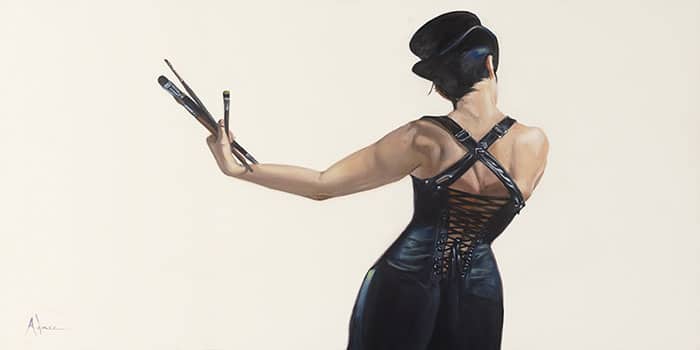Our passion for creating art is a positive and powerful emotion that comes to us freely and requires little effort. On the other hand, selling art demands a different mindset, behavior and set of challenging activities. However, the act of selling art doesn’t have to be perceived as a combination of dreaded tasks separate and different than creativity. Rather, the experience of selling art is a continuation of our desire to express ourselves fully, share our creative vision, and communicate and connect with others. When viewed from this positive perspective selling art becomes enjoyable, rewarding and powerful. When selling your art consider turning your creative passion into P.O.W.E.R. with these five easy-to-remember selling points:
P is for Price
Setting a fair price is based on art marketing research and knowledge. The perceived and actual values placed on the art are based on aesthetics and career credentials. A fair price is also one that brings you a profit that generates financial power. Your goal is to arrive at the best pricing system as possible that meets your needs and those of your buyers. People will decide to buy your art based on their subjective preferences as well as practical considerations, such as if the art will fit their budget and décor. For a company, the art needs to fit their identity. When you are confident that you are offering the best quality of art and value for your prospective buyer, you must convey that message and reassure them that they are making the right decision. Read more about pricing your art and establishing its value here.
O is for Options
When you offer your potential buyers a few different options they are more likely to choose one or another. I suggest that you provide three different options to suit a range of clients’ budgets:
1. Smaller works, multiples or art that has been created using a less time-consuming and/or costly medium
2. Art in a medium price range that will probably suit most buyers
3. Art that is usually larger, more time consuming and complex. In many instances, new buyers will start with a small or lower-priced purchase and add to their collection of art over time. Read Increase Art Sales With Your Present Art Buyers.
Offering your buyers options for purchasing art is easier than ever. Provide several options for prospective buyers in the way of installment plans, in addition to using PayPal, Square, Dwolla, and other available services.
W is for Win-Win
Strive to achieve a mutually beneficial relationship with your art buyers. You will earn their trust by expressing a willingness to provide the same extra attention and personalized service to them as you do in your art. Each buyer will have different needs so listen to what they want and reassure them accordingly. During the selling process, they will provide clues as to their thoughts and feelings. Respond by providing solutions to remove any doubts or obstacles that may be in their way. Encourage an open and honest dialogue. Remember, good listeners who care about serving their customers make the best sales people.
E is for Engagement
The longer you engage others with a positive experience while they get to know more about you and your artwork, the more your sales will increase. Build a welcoming, easy-to-navigate, well-designed website with videos that reflect your positive personality. Be hospitable and provide attractive exhibition displays when showing your art in public. Both of these activities will invite people to stay longer and visit more frequently. Engage others through regularly scheduled friendly email newsletters and social media posts. The more you reach out to people and share your enthusiasm for being an artist, the more they are likely to buy your art. Also, continue to follow up with your buyers after your sale.
R is for Referrals
When the sale is completed and a bond of trust has been formed between you and the buyer, you may ask if they would be interested in referring their friends and associates to you. When you ask in a pleasant manner without any pressure you will find them eager to help. You may offer them a few brochures and business cards as a service to them. You may ask if they know of anyone who would like to be placed on your mailing list.
I realize you may be reluctant to do this, so think of asking for referrals this way: Your buyers know how much pleasure they derive from owning your art, so why wouldn’t they appreciate the opportunity to share this experience with their friends, family members and cohorts?
The next time you think about selling your art I hope you remember these five P.O.W.E.R. steps and enjoy the continuation of the creative process, through sharing positive experiences with your art buyers.
You may also want to read How and Where to Find Art Buyers and Collectors.
Renée Phillips is an author, writer, and frequent blogger. Her articles can be found on www.Renee-Phillips.com, www.ManhattanArtsBlog.com and www.LuxeBeatmag.com. She is founder and director of Manhattan Arts International. As The Artrepreneur Coach, she provides career guidance and writing services for artists. Follow her on Twitter and join her on Facebook and Linkedin.




